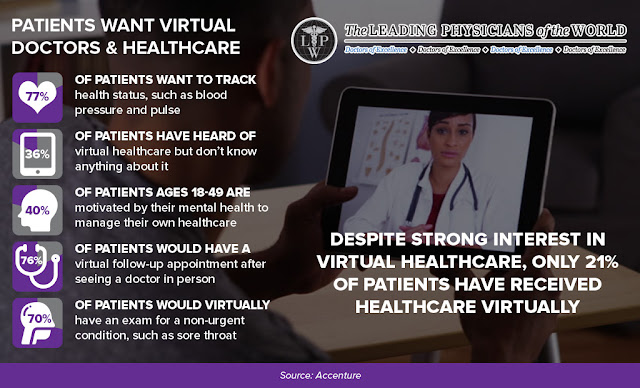Virtual Doctors - The Leading Physicians of the World
After years
of big promises, telemedicine is finally living up to its potential. Driven by
faster internet connections, ubiquitous smartphones and changing insurance
standards, more health providers are turning to electronic communications to do
their jobs—and it’s upending the delivery of health care.
Doctors are
linking up with patients by phone, email and webcam. They’re also consulting
with each other electronically—sometimes to make split-second decisions on
heart attacks and strokes. Patients, meanwhile, are using new devices to relay
their blood pressure, heart rate and other vital signs to their doctors so they
can manage chronic conditions at home. Telemedicine also allows for better care
in places where medical expertise is hard to come by. Five to 10 times a day,
Doctors Without Borders relays questions about tough cases from its physicians
in Niger, South Sudan and elsewhere to its network of 280 experts around the
world, and back again via the internet.
In the
woods outside St. Louis, shifts of doctors and nurses work around the clock in
Mercy health system’s new Virtual Care Center—a “hospital without beds” that
provides remote support for intensive-care units, emergency rooms and other
programs in 38 smaller hospitals from North Carolina to Oklahoma. Many of them
don’t have a physician on-site 24/7. In the TeleICU section, critical-care
doctors sit at oversize video monitors that continually collect data on every
far-flung ICU patient and can spot signs of imminent trouble. If a patient
needs attention, Mercy physicians can zoom in via two-way camera—close enough
to read the tiny print on an IV bag.
In the past
year, ICUs monitored by Mercy specialists have seen a 35% decrease in patients’
average length of stay and 30% fewer deaths than anticipated. “That translates
to 1,000 people who were expected to die who got to go home instead,” says
Randy Moore, president of Mercy Virtual.As a measure of how rapidly
telemedicine is spreading, consider: More than 15 million Americans received
some kind of medical care remotely last year, according to the American
Telemedicine Association, a trade group, which expects those numbers to grow by
30% this year.
None of
this is to say that telemedicine has found its way into all corners of
medicine. A recent survey of 500 tech-savvy consumers by HealthMine found that
39% hadn’t heard of telemedicine, and of those who haven’t used
it, 42% said they preferred in-person doctor visits. In a poll of 1,500 family
physicians, only 15% had used it in their practices—but 90% said they would it
if were appropriately reimbursed.
What’s
more, for all the rapid growth, significant questions and challenges remain.
Rules defining and regulating telemedicine differ widely from state to state
and are constantly evolving. Physicians groups are issuing different guidelines
about what care they consider appropriate to deliver in what forum..




Comments
Post a Comment